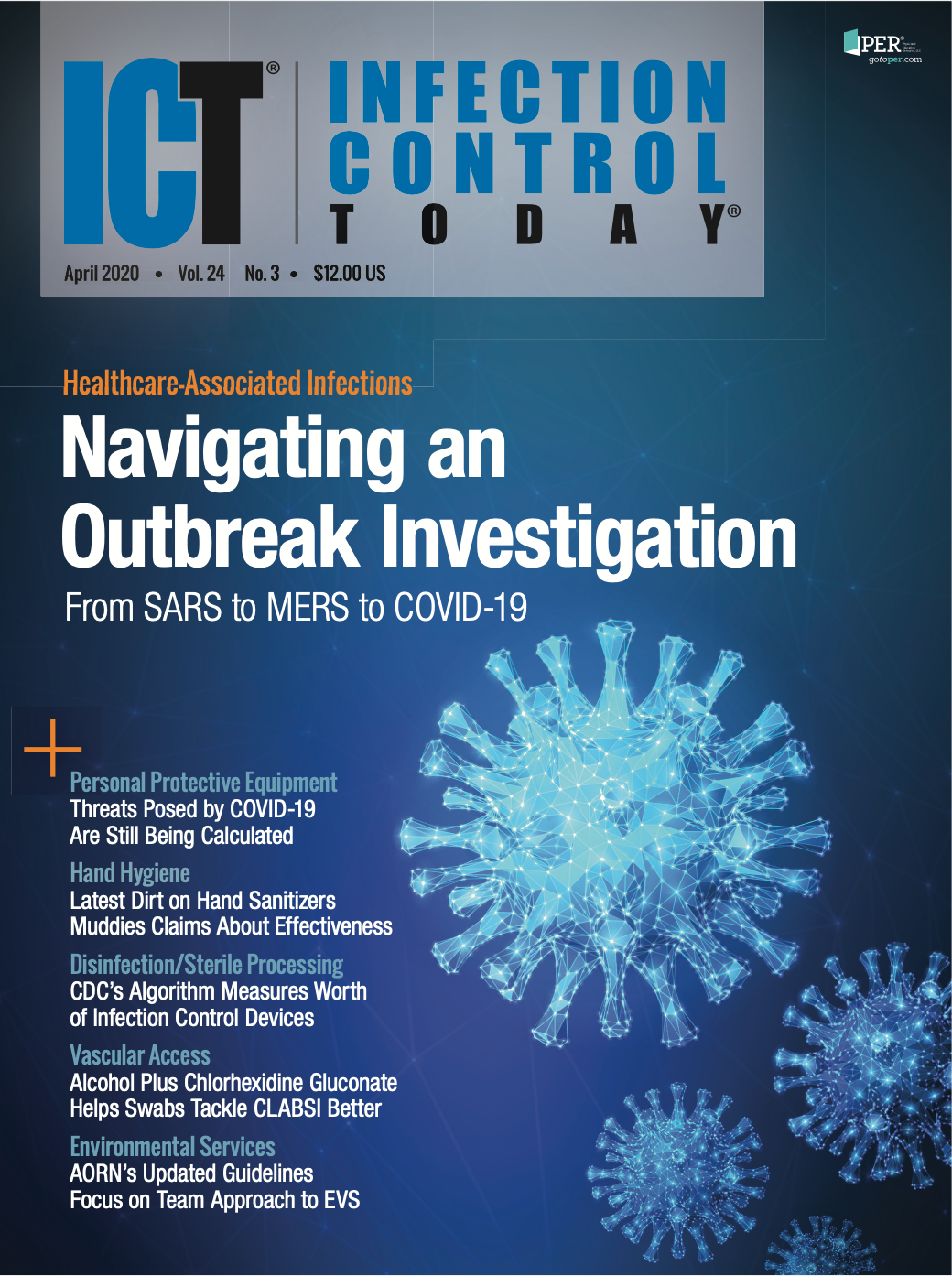Go Team! IPs and Antimicrobial Stewardship Programs Take On Superbugs
Infectoin preventionists's can bring their perspective and strengths to the antimicrobial stewardship (AMS) program and offer ways to bring the work to the bedside and engage the partnerships that already exist to make AMS programs successful.

Throughout the evolution of antimicrobial stewardship (AMS) programs in healthcare, the role of the infection preventionist (IP) has not been clearly defined. AMS programs are an effort to coordinate the activities of pharmacy, providers, nursing, infection prevention, and administrators to align policy and practice around antimicrobial prescribing in ways that are optimal for patient care and appropriate for maintaining proper use to help alleviate the burden of antimicrobial resistance and other potential negative outcomes that can result in patient harm.
Those harms have long been noted. The continued misuse of antimicrobials is driving up the resistance of numerous types of pathogens and prodding the US Centers for Disease control and Prevention (CDC), the World Health Organization (WHO), and other national and international health authorities to focus more on AMS programs.
The IP has always been called on as a partner and collaborator of AMS programs, as the goals of AMS dovetail with many of the goals of IP programs. However, depending on many factors, how involved the IP is in the program varies from facility to facility.
In some facilities, the IP is seen as the champion for the AMS program and would be instrumental in getting the program started and building support to move forward with the effort. Commonly the IP is the chair or co-chair of the committee. Pharmacy representatives are also usually a co-chair, as well as perhaps infectious disease physicians.
The specialty of an infectious disease pharmacist is not available in many settings, therefore the leadership of the committee often has a learning curve about the principles and concepts of AMS and how that could be implemented in their organization. IP is a useful partner in the establishment of new committees and initiatives, as much of the work of an IP involves gathering stakeholders, researching best practices, and working with a multidisciplinary team to reach mutual objectives. Also, the IP often has relationships with the various groups involved in AMS committees, so they are a good resource to bring those parties together. However, IPs are not the expert in prescribing and administering antimicrobials, so the knowledge of providers and pharmacists is essential in taking the core concepts and then translating them into operational models for the organization.
Numerous professional societies have seen the need for the promotion of AMS activities and have developed toolkits, training courses, online resources, and professional education that is available for practitioners who are new to the concepts or need some help in developing AMS programs in their facilities. The Joint Commission and other accrediting bodies have included AMS programs in requirements for survey. The CDC included AMS programs in its 2019 Conditions of Participation. Based on data from the CDC, these efforts have increased the percentage of hospitals with active AMS programs from 41% in 2018 to 85% in 2018.1
One role that IPs bring to AMS is to provide outcomes data related to multidrug-resistant organisms and negative patient outcomes, such as healthcare-onset Clostridiodesdifficile occurrences. Along with providing data, IPs often perform case review of healthcare facility infections and potential impacts that antimicrobial use may have had in those cases. When doing case reviews, it is important that the IP alone is not looking at the prescribing, as a joint review with pharmacy or infectious disease physicians can provide a deeper insight into the selection based on patient diagnosis.
As AMS programs become more established, the role of the IP can move away from the leader of the group and take on other duties in order to innovate the program and bring other related concepts to the team. Staff and patient education are a huge part of what an IP does on a daily basis. Often frontline staff are not aware of the AMS activities in their facility and how they can contribute to the program.
This is an opportunity for the IP to develop educational programs and share with staff about AMS and how it impacts their work, and vice versa. Nurses in particular can also be a vital part of AMS work, as they are interacting with the patients, assessing signs and symptoms, and communicating with providers routinely. By providing some insight into the concepts of AMS at the facility, the nurses can act as an advocate from the patients with providers and also educate patients on why antibiotics may not be necessary or why a certain medication is not appropriate.
IPs can also help educate patients. Often we hear of patients going to the physician and expecting to walk out of the office with something tangible, so a prescription for an antimicrobial may be given to ensure patient satisfaction. IPs can partner with providers in the inpatient and outpatient arenas to teach patients about when an antimicrobial is needed, and when other alternatives should be used. Scripting can be developed so that a consistent message is sent to the patient from the moment they walk in the door, get checked in, and get called back for the initial assessment to when the provider sees them.
Diagnostic stewardship is becoming the new hot topic, which is a perfect companion to AMS activities. IPs have been looking at diagnostic stewardship for many years, focusing on educating about the signs and symptoms associated with urinary tract infections or C difficile, and providing guidance on appropriate testing.
These activities can be overseen by the AMS committee and policy and procedures can be established, utilizing electronic medical records and other platforms, to set up criteria that make clinical sense when ordering tests. For instance, pan culturing is still commonly seen in healthcare systems and should be considered a possible inappropriate use of resources that can potentially lead to inaccurate interpretation of test results if the full clinical picture of the patient is not considered.
Though CMS and some medical associations want outpatient, non-acute healthcare facilities to have robust AMS programs, there still exists a gap in the implementation of AMS in settings such as primary care offices, long-term care facilities, acute rehabs, behavioral health settings, dental clinics, and pediatric offices. IPs in these settings may have to be the champion to initiate AMS programs. There are resources for outpatient settings available, however the oversight that is seen in hospitals is not the same and can be a barrier to support, as there are many other competing priorities. This is where the IP can leverage expertise in developing that burning platform, call to action, and determine and engage those stakeholders within their organization who can help drive change.
AMS and IP programs are strong partners in the work to decrease multidrug-resistance and promote positive patient outcomes. IPs can bring their perspective and strengths to the AMS program and offer ways to bring the work to the bedside and engage the partnerships that already exist to make AMS programs successful.
Rebecca Leach, RN, BSN, MPH, CIC, has been an infection preventionist since 2010, with a background in nursing and epidemiology. Leach, a regular contributor to Infection Control Today, currently works at a healthcare system in Phoenix that includes 5 hospitals and more than 100 outpatient treatment centers.
References:
1. Centers for Disease Control & Prevention. Antibiotic resistance & patient safety portal. CDC wesite. https://arpsp.cdc.gov. Accessed February 18, 2020.

Uncovering a Hidden Risk: Alcohol Use Disorder Significantly Increases C difficile Infection Rates
April 10th 2025A groundbreaking study reveals a strong connection between alcohol use disorder and increased risk for Clostridioides difficile infection, challenging traditional assumptions and calling for enhanced infection prevention protocols.